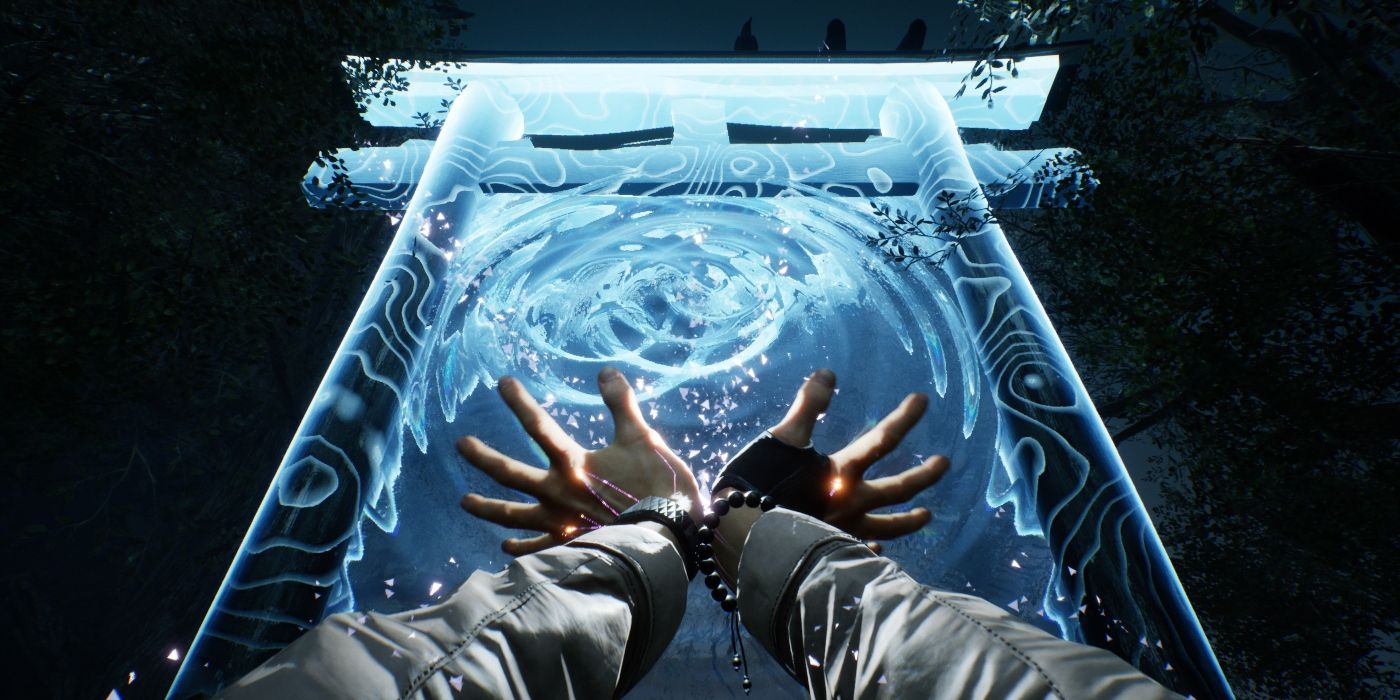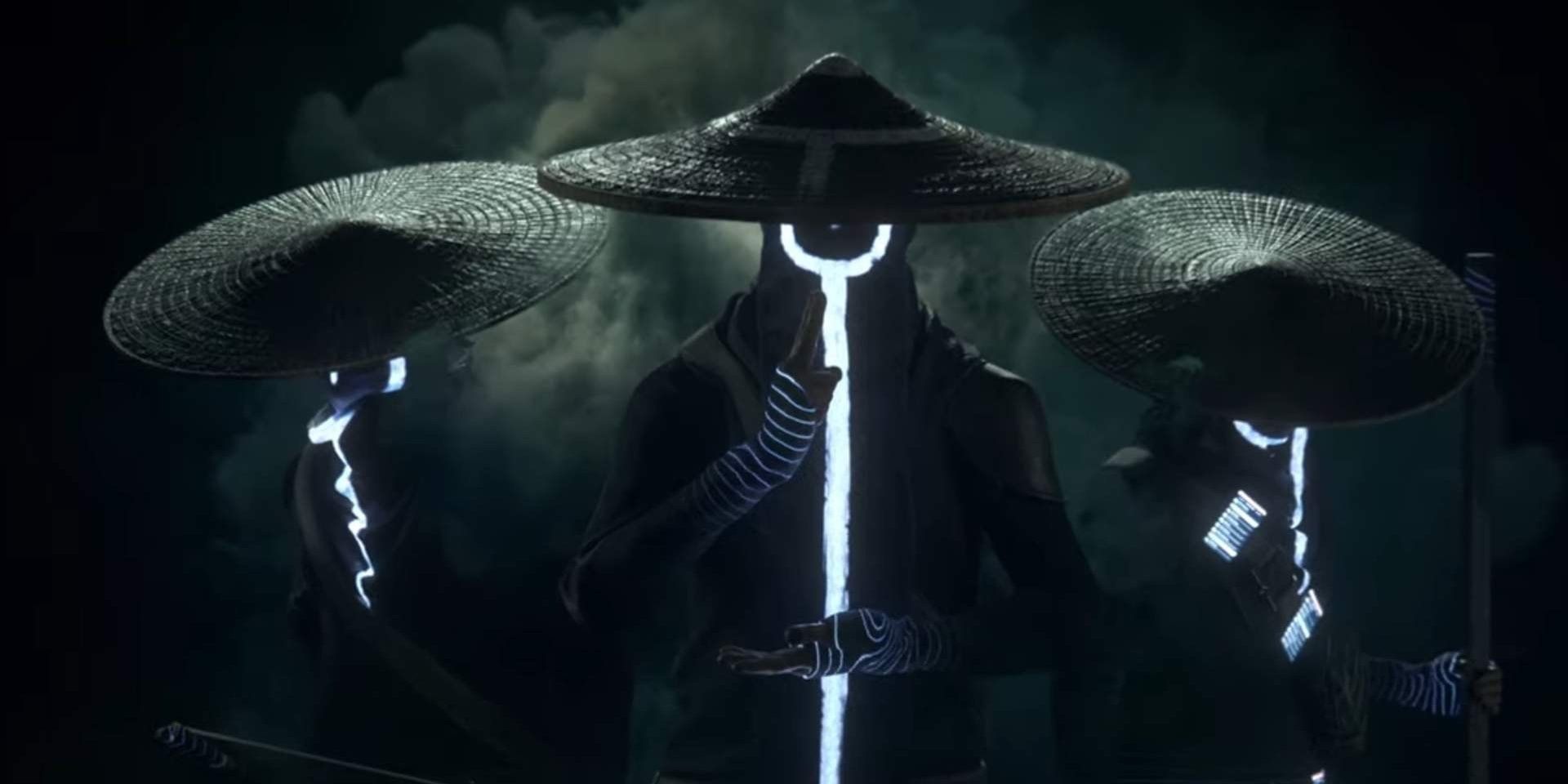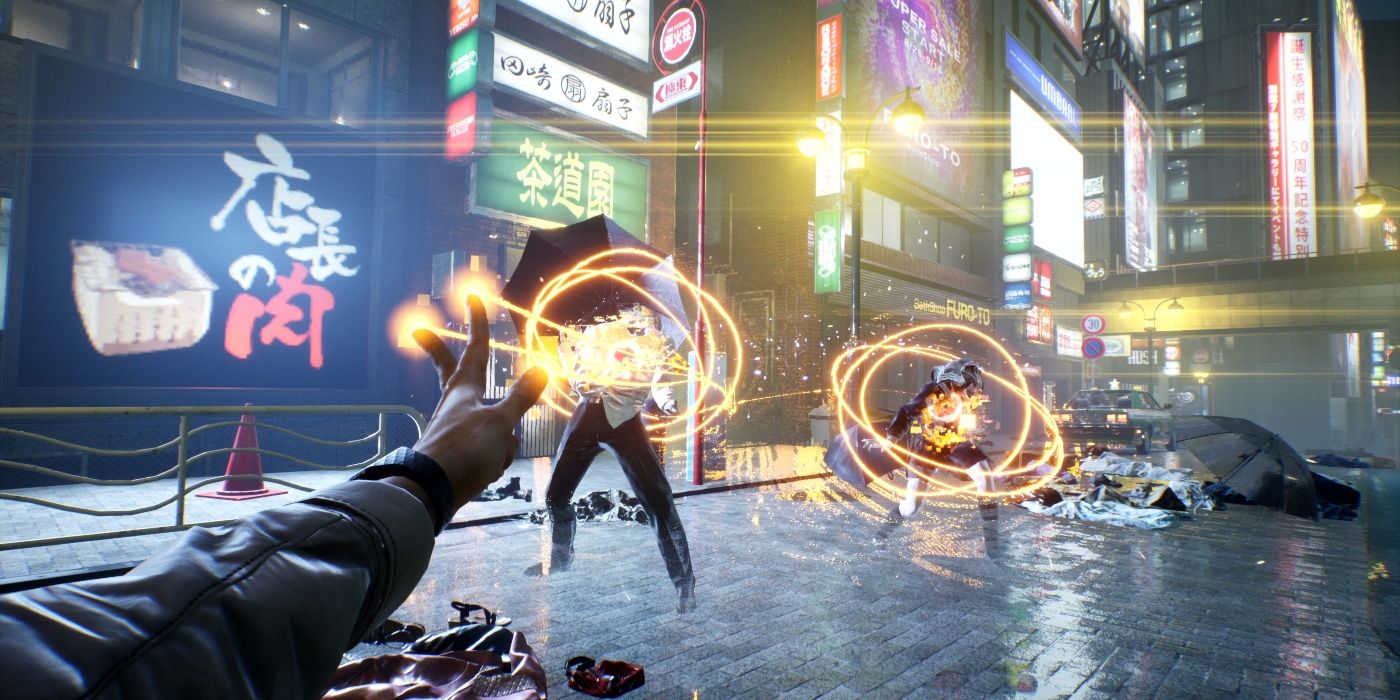The supernatural horror action game Ghostwire: Tokyo, under development by the same studio behind The Evil Within 2, takes place in a desolate Tokyo haunted by monsters based not just on classical Japanese Yokai tales, but modern-day internet monster myths as well. Judging by the trailer footage, the charm of Ghostwire: Tokyo will lie in how it blends modern and ancient horror stories together, as its mystical protagonist fights legendary demons in a neon-and-chrome Tokyo with its own share of modern-day terrors.
Tango Gameworks, the developers of the Evil Within survival horror games, are very experienced when it comes to designing creepy-as-hell monsters, drawing on visual elements as eclectic as barbed wire, wax, safes, and cameras to create creatures that are symbolic and uncanny. The warped monsters seen in the gameplay trailer for Ghostwire: Tokyo are just as creepy as ever, but rather than encouraging players to run, Tango Gameworks looking to build a more action-packed game where players can turn the tables on these horrors, a concept summed up by the tagline "Don't fear the unknown: attack it."
As suggested by the game title, Ghostwire: Tokyo takes place in the city of Tokyo, struck by a supernatural calamity which filled the streets with monsters and caused 99% percent of its population to disappear. The main character of the story seeks to solve this mystery by venturing through gateways to supernatural realms and exorcising spirits using magical spells cast using hand seals inspired by Daoist/Shinto religious gestures. The origin of the monsters in Ghostwire: Tokyo will only be fully known on release: that being said, many of the monsters in the trailers bear intriguing similarities to creatures from real-life myths and memes.
The Ghostwire: Tokyo Monsters Inspired by Yokai
Japanese culture is filled to the brim with stories of Yūrei ghosts and demonic Yokai, supernatural entries frequently depicted in paintings and art scrolls of the Hyakki Yagyō, aka "The Night Parade of a Hundred Demons." A few of the entities in the Ghostwire: Tokyo trailers seems to be directly modeled after creatures from the Hyakki Yagyō: the ghost-women with long, stringy black hair seem to be Onryō, the vengeful spirits of young women (and the main inspiration for the ghosts in The Ring horror movies), while the mysterious faction of sky-diving hooligans are wearing Hannya Masks from Noh theater, designed to resemble the faces of jealous demons.
The Ghostwire: Tokyo Monsters Inspired by Internet Horror Stories
The other monsters seen in the Ghostwire: Tokyo trailer seem to draw from more contemporary monster myths and urban legends, spread through word of mouth, internet memes, and 'creepypasta' horror stories. The faceless humanoids with umbrellas, for instance, bear a strong resemblance to the Slender Man, the faceless, tendril-armed antagonist of numerous online horror stories, an eldritch creature that pursues people who learn too much about it. Other entities in the trailer – the headless ghosts in Japanese school uniforms and ghosts made out of cardboard boxes – are harder to identify, but may have been inspired by the modern ghost stories shared between Japanese students in cram school and online – stories like the Kuchisake-onna, a vengeful spirit with a mutilated mouth, or the Kotoribako internet myth, in which a cursed puzzle box brings death to all who open it.
Whenever the protagonist of the Ghostwire: Tokyo gameplay trailer blasts apart a spectral enemy, the defeated spirits starts to dissolve into pixellated chunks. Additionally, there's a scene where the protagonist makes a spellcasting gesture towards a computer server, followed by the screen growing cluttered with Matrix-style computer code symbols. Does this hint at a plot twist where all the "Ghosts" in Ghostwire: Tokyo are creatures with a scientific origin? Or could these "Ghosts" be the product of magic fused with computer science, a techno-magical disaster that brought the all the urban legends of modern-day Tokyo to life? Either way, the exorcist hero of Ghostwire: Tokyo has their work cut out for them.



